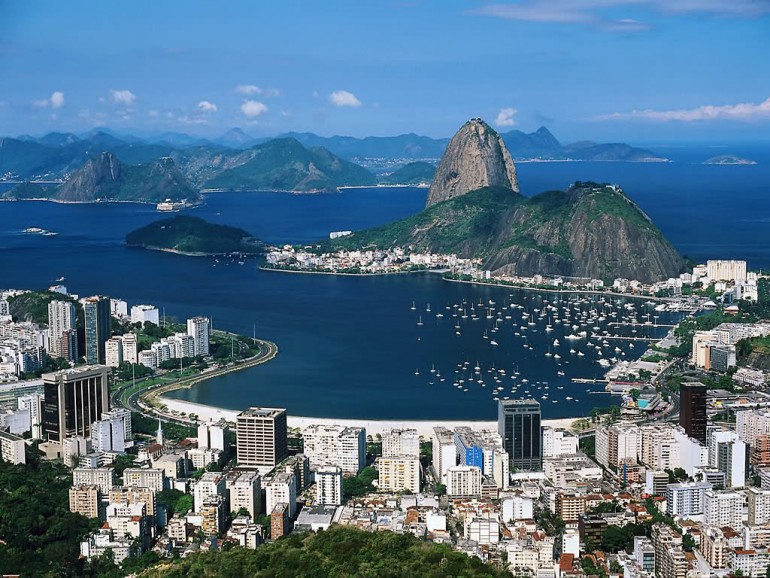Sponsored Listings:
Primarily only thought of as an area to work or conduct business, today, Rio’s commercial district of Centro is revitalized and is now a must-see stop on any tourist’s itinerary.
RIO DE JANEIRO, BRAZIL – In the run up to the mega-spectacle that was the Rio 2016 Olympics, perhaps no neighborhood in the Cidade Maravilhosa was given a greater facelift than Rio de Janeiro’s commercial district, Centro.
Thanks mainly to the immense Porto Maravilha project, which revitalized the area’s Port Zone, Centro, often thought of in the past as a place to do business rather than sightsee, has now become a must-see tourist destination for its historical landmarks, sophisticated cultural activities, charming squares and waterfront views.
“In most cities around the world, the downtown area is a symbol of tradition, culture and history and Rio is a perfect representation of it,” exclaimed Nohelia Sanchez, co-founder of online travel and tourism agency RdJ4U to The Rio Times. “Rio has many wonderful things to share with the world beyond the beach and the rainforest, which of course are among its most valuable treasures, however, very few visitors have the chance to explore the other side of the city,” she added.
The revitalization of the neighborhood began in 2013 with the demolition of the Elevado da Perimetral elevated highway, which loomed imposingly like a dark cloud over the area. Its removal allowed the city to create the many charming public squares that now stretch to the edges of Guanabara Bay with a clear view of the waterfront.
The biggest of these squares is Praça Mauá, which re-opened in September 2015, providing residents and visitors with a 25,000-square-meter public plaza on the Guanabara Bay waterfront, along with the new Museu do Amanhã (Museum of Tomorrow), the Museu de Arte do Rio (MAR), as well as scenic bike lanes and walkways.
“The new center offers a circuit that includes most of the best museums in the city,”
Sanchez explained. “It is a great alternative for a cultural day and unique sightseeing journey since you can get an exclusive sunset and spectacular views of Niteroi and the city of Rio itself.”
The Perimetral’s demolition has also given visibility for the area’s many historic buildings, once obstructed by the huge elevated highway, such as the Paço Imperial (Imperial Palace), Palácio Tiradentes (Tiradentes Palace), the Naval Museum, and São José church.
To take full advantage of all the sights Centro has to offer, it is important to “define a route or itinerary since there are many things to see and venues to visit,” Sanchez advises. “Visitors can have a complete route starting in the Tiradentes Palace and Praça XV, then taking a stroll through the port area and at the end of the day watching the sunset in Praça Maua.”
Of course, being Rio’s commercial district, Centro receives hundreds of thousands of commuters daily and is easily accessible by all of Rio’s public transportation. But, leading up the Games, the neighborhood also received a new public transportation system, the VLT. With scores of tourists and residents now discovering the many attractions in the neighborhood, the light rail VLT, crosses from one end of the area to the other to help navigate the area’s busy streets.
This past November, the area received another new attraction, one of Rio’s most anticipated openings in many years: Aquario, the largest aquarium in South America. The five-floor, 26 thousand square-meter space brings together some three thousand animals in 28 tanks filled with 4.5 million liters of salt water.
Since it opened on November 9th, the aquarium has received throngs of visitors for its biggest attraction, Recinto Oceânico (Oceanic Enclosure), a seven-meter deep tank, which the public can cross through via an undersea tunnel for an up-close experience of swimming with fishes, rays and, of course, sharks.
Finally, while its easy to get lost in all the new activities and sights Centro has to offer, Sanchez shares one final cautionary note, “even though the area is safe during the day, after the sunset you have to start your way back to the Zona Sul (South Zone) area,” she explained, “because as most of the downtown areas, it gets empty and is not recommended to be wandering around.”
Sourse: riotimesonline.com










